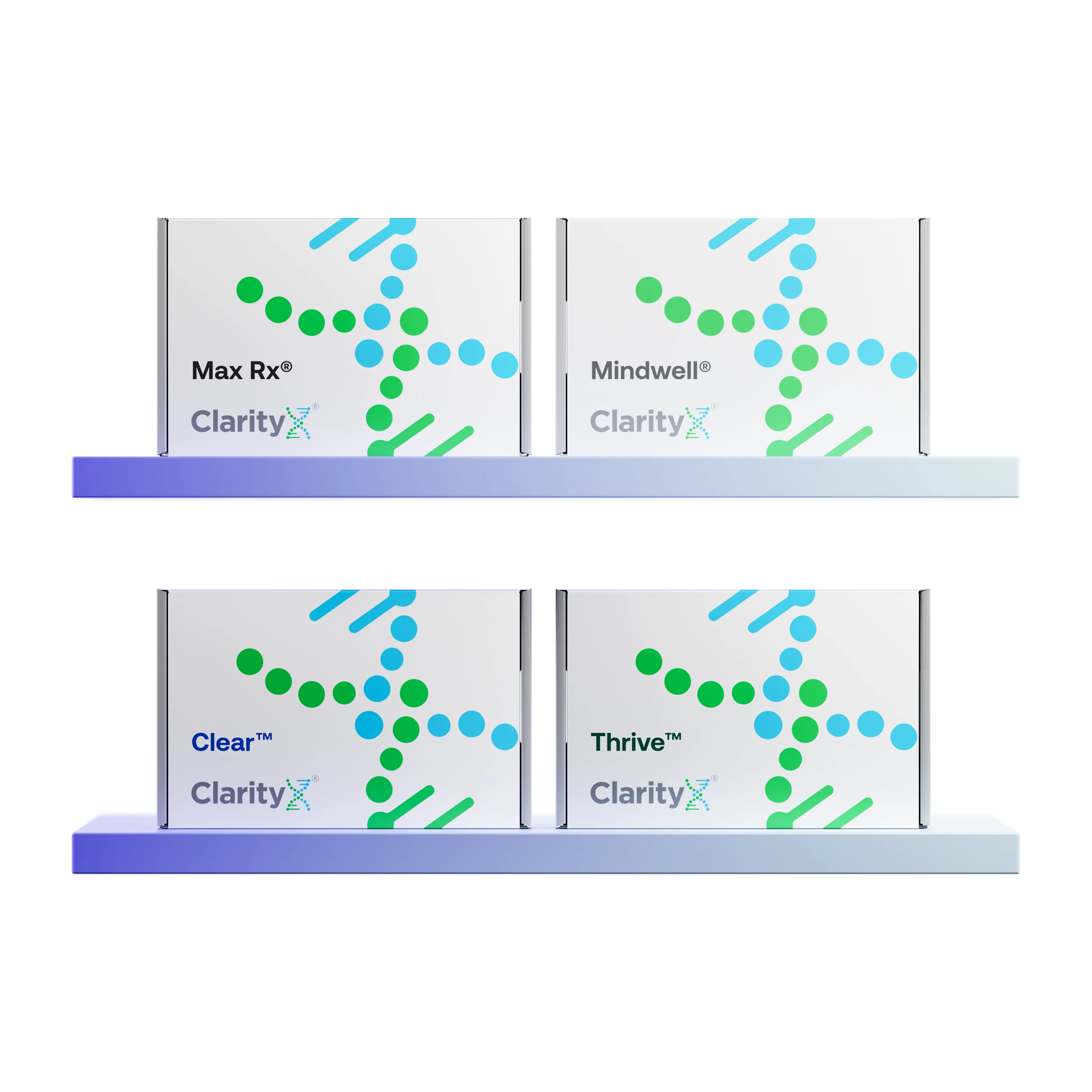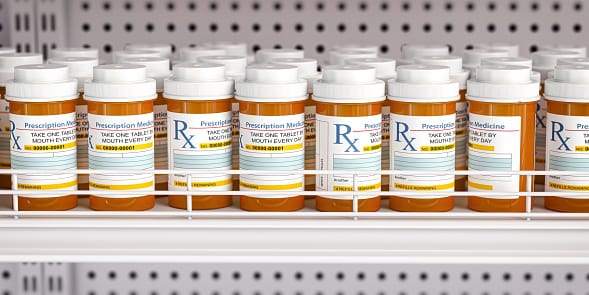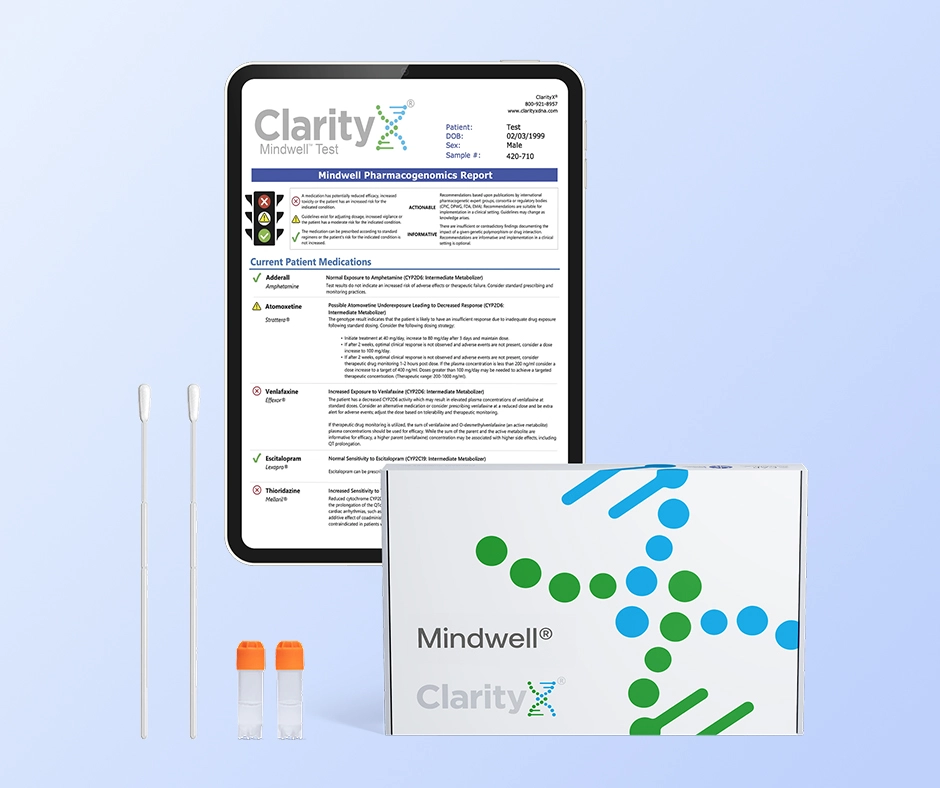Key Highlights
- Seroquel® (quetiapine) and Haldol® (haloperidol) are both antipsychotic drugs used to treat various psychiatric conditions.
- Seroquel is an atypical antipsychotic that is commonly used for bipolar disorder and schizophrenia. It has a lower risk of extrapyramidal symptoms (abnormal, involuntary movements) compared to Haldol.
- Haldol is a typical antipsychotic that is often used to treat delirium, behavioral outbursts, and schizophrenia. Long-acting injections are available in addition to regular-release tablets.
- Both medications have potential side effects and risks, such as weight gain and changes in blood pressure, but the specific side effects may differ between the two drugs.
- The choice between Seroquel and Haldol depends on the individual's specific condition, symptoms, and potential risks.
Introduction
Antipsychotic medications play a crucial role in the treatment of various psychiatric conditions, including schizophrenia, bipolar disorder, and delirium. These medications help manage symptoms such as hallucinations, delusions, and disorganized thinking. Two commonly prescribed antipsychotics used in clinical practice for managing these symptoms are Seroquel and Haldol. Understanding the differences between these medications can help individuals and healthcare providers make informed decisions about treatment options.
Seroquel and Haldol belong to different categories of antipsychotics, with Seroquel being an atypical antipsychotic (i.e., newer generation antipsychotics) and Haldol classified as a typical antipsychotic (first-generation antipsychotic). They have distinct mechanisms of action, uses, and potential side effects. It's essential to weigh the benefits and risks of each medication based on an individual's specific condition and needs. By comparing Seroquel and Haldol, individuals can better understand which medication may be most suitable for their situation.
Understanding Antipsychotic Medications
Antipsychotic medications are commonly prescribed to treat psychiatric conditions such as schizophrenia, bipolar disorder, and delirium. These medications block certain receptors in the brain, reducing the activity of dopamine, a neurotransmitter involved in mood and behavior regulation. Antipsychotics are classified into two main categories: typical antipsychotics and atypical antipsychotics. Typical antipsychotics, like Haldol, primarily block dopamine receptors, while atypical antipsychotics, such as Seroquel, also affect other neurotransmitters, such as serotonin.
The Role of Antipsychotics in Treatment
Antipsychotic medications play a crucial role in the treatment of various psychiatric conditions. In the case of schizophrenia, antipsychotics help reduce hallucinations, delusions, and disorganized thinking. These medications can also stabilize mood and prevent or lessen the intensity of manic and depressive episodes in bipolar disorder.
Additionally, antipsychotics are often used to manage delirium, a state of acute confusion commonly seen in older patients or those in intensive care units. By targeting specific neurotransmitters in the brain, antipsychotics help restore balance and improve symptoms associated with these conditions, including the treatment of delirium.
Categories of Antipsychotics: Typical vs Atypical
Antipsychotic medications are categorized as either typical or atypical. Typical or first-generation antipsychotics, like Haldol, primarily block dopamine receptors in the brain. These medications are effective in managing positive symptoms of psychosis, such as hallucinations and delusions. However, they have a higher risk of extrapyramidal symptoms, which are movement-related side effects.
Atypical antipsychotics, such as Seroquel, work by blocking both dopamine and serotonin receptors. They are commonly used to treat a wider range of psychiatric conditions and have a lower risk of extrapyramidal symptoms. The choice between typical and atypical antipsychotics depends on the individual's specific condition, symptoms, and potential side effect profile, including adverse events such as stroke, which have been linked to atypical antipsychotic use in elderly patients.
An Overview of Seroquel (Quetiapine)
Seroquel, also known by its generic name quetiapine, is an atypical antipsychotic medication commonly prescribed for various psychiatric conditions. It works by blocking dopamine and serotonin receptors in the brain, helping to regulate mood and reduce symptoms of psychosis. Seroquel is frequently used to treat bipolar disorder and schizophrenia. It has a lower risk of extrapyramidal symptoms compared to typical antipsychotics like Haldol. The medication comes in different formulations, including immediate-release and extended-release tablets, providing different dosing options for individuals based on their specific needs.
Mechanism of Action
The exact mechanism of action of Seroquel is not fully understood. However, it is believed to primarily block dopamine and serotonin receptors in the brain. By modulating these neurotransmitters, Seroquel helps restore balance and regulate mood. Additionally, Seroquel has an affinity for histamine and adrenergic receptors, which can contribute to its sedative effects. Sedative effects may prove beneficial in some instances (i.e., individuals managing bipolar who are also having difficulty sleeping), but monitoring for daytime drowsiness is important.
The medication's impact on cognitive function is still being studied, but some research suggests that it may have a positive effect on cognitive deficits associated with certain psychiatric conditions. Further studies are needed to fully understand the cognitive effects of Seroquel and its potential benefits in improving cognitive function.
Common Uses and Benefits
Seroquel is prescribed for various psychiatric conditions, including bipolar disorder, schizophrenia, and depression. In bipolar disorder, Seroquel helps stabilize mood and reduce the frequency and intensity of manic and depressive episodes. It can also be used as an adjunct treatment with other medications to manage symptoms of major depression. In schizophrenia, Seroquel helps reduce hallucinations, delusions, and disorganized thinking.
Additionally, Seroquel is sometimes prescribed off-label to treat sleep disorders, such as insomnia, typically in the presence of another mental health concern. The medication's sedative effects can help improve sleep quality and duration. However, it's important to note that Seroquel should only be used under the guidance of a healthcare professional.
Potential Side Effects and Risks
Like all medications, Seroquel has potential side effects and risks. Common side effects include nausea, vomiting, dry mouth, headache, dizziness, drowsiness, and sleep problems. Weight gain is also a common side effect associated with Seroquel, which can be significant in some individuals. Additionally, Seroquel may cause changes in blood pressure, including a drop in blood pressure upon standing.
Metabolic changes, such as elevated blood sugar and cholesterol levels, are examples of less common but more severe side effects. It's important to discuss these potential side effects with a healthcare professional and monitor them closely during treatment with Seroquel.
An Overview of Haldol (Haloperidol)
Haldol, also known by its generic name haloperidol, is a typical antipsychotic medication commonly prescribed for various psychiatric conditions. It primarily works by blocking dopamine receptors in the brain, helping to reduce symptoms of psychosis. Haldol is often used to treat delirium, especially in elderly patients in the intensive care unit. It can also be effective in managing severe behavior problems in children. Haldol comes in different formulations, including oral tablets and injectable solutions, providing different options for administration based on the individual's needs.
Mechanism of Action
Haldol works by blocking dopamine receptors in the brain, which helps reduce symptoms of psychosis. By inhibiting the effects of dopamine, Haldol helps restore balance and manage hallucinations, delusions, and disorganized thinking. However, this mechanism of action can also lead to extrapyramidal symptoms, which are movement-related side effects.
It's important to note that Haldol carries a rare but serious risk of a condition called neuroleptic malignant syndrome (NMS). Fever, irregular heartbeats, mental status changes, and renal failure characterize NMS. Any signs or symptoms of NMS should be reported to a healthcare professional immediately.
Common Uses and Benefits
Haldol is commonly used to manage delirium, a state of acute confusion often associated with conditions like dementia or other underlying medical conditions. Haldol helps reduce agitation and psychotic symptoms associated with the diagnosis of delirium, providing relief and improving overall patient outcomes.
Additionally, Haldol can be effective in managing severe behavior problems in children, such as aggression or self-injury. It's important to note that the use of Haldol in these populations should be carefully evaluated and monitored by healthcare professionals.
Potential Side Effects and Risks
Like any medication, Haldol carries potential side effects and risks. Common side effects of Haldol include dizziness, drowsiness, restlessness, and anxiety. Extrapyramidal symptoms, such as muscle stiffness, tremors, and involuntary movements, can also occur with Haldol use. These movement-related side effects can be more pronounced with typical antipsychotics like Haldol compared to atypical antipsychotics.
It's important to note that Haldol may also have effects on liver function, and individuals with pre-existing liver disease should be closely monitored while taking this medication. As with any medication, discussing potential side effects and risks with a healthcare professional before starting treatment with Haldol is essential.
Comparing Seroquel and Haldol
Seroquel and Haldol belong to different categories of antipsychotics, with Seroquel being an atypical antipsychotic and Haldol classified as a typical antipsychotic. They have distinct mechanisms of action, side effect profiles, and uses. Seroquel is commonly prescribed for conditions such as bipolar disorder and schizophrenia. It has a lower risk of extrapyramidal symptoms but may cause significant weight gain.
On the other hand, Haldol is often used to manage delirium and severe behavior problems in children. It carries a higher risk of extrapyramidal symptoms but may be more effective in certain situations. The choice between Seroquel and Haldol should be based on an individual's specific condition, symptoms, and potential risks.
Efficacy in Treating Psychiatric Conditions
Numerous studies have evaluated the efficacy of Seroquel and Haldol in the treatment of various psychiatric conditions. In a randomized controlled trial comparing the two medications for the treatment of schizophrenia, both Seroquel and Haldol were found to be effective in reducing psychotic symptoms. However, Seroquel was associated with a lower risk of extrapyramidal symptoms compared to Haldol.
When it comes to managing bipolar disorder, Seroquel has shown efficacy in stabilizing mood and reducing manic and depressive episodes. On the other hand, Haldol has been found to be effective in managing delirium and severe behavior problems in children. The choice between the two medications depends on the specific condition being treated and the individual's response to treatment.
Side Effect Profiles
Both Seroquel and Haldol have side effect profiles that need to be considered when choosing the appropriate medication. Common side effects of both drugs include nausea, vomiting, dry mouth, headache, dizziness, drowsiness, sleep problems (insomnia), and mood or behavior changes. Additionally, both medications can cause breast swelling or discharge in some individuals. However, there are certain side effects that are specific to each medication, including potential nervous system side effects of haloperidol. Discussing these potential side effects with your doctor before starting either medication is important.
Haldol may cause side effects such as diarrhea, nervousness, spinning sensation, restlessness, anxiety, skin rash, itching, spontaneous eye movements, loss of interest in sex, blurred vision, difficulty urinating or urinating less than usual, and occasional movement disorders. On the other hand, Seroquel may result in side effects such as constipation, stomach pain, upset stomach, lightheadedness, tiredness, sore throat, increased appetite, or weight gain.
It is important for individuals to be aware of these potential side effects and discuss them with their healthcare provider before starting any medication. Healthcare providers can provide guidance on managing side effects and may adjust the treatment plan if necessary.
Patient Tolerability and Compliance
Patient tolerability and compliance are important factors to consider when choosing between Seroquel and Haldol. Tolerability refers to how well a patient can tolerate and manage the side effects of a medication, while compliance refers to how well a patient follows their prescribed treatment regimen.
In terms of tolerability, some studies suggest that Seroquel may have a lower risk of extrapyramidal symptoms compared to Haldol. Extrapyramidal symptoms are movement disorders that can occur as a side effect of antipsychotic medications. These symptoms can include muscle stiffness, tremors, and involuntary movements. By choosing a medication with a lower risk of extrapyramidal symptoms, patients may have a better overall experience and quality of life.
Compliance is another important consideration. It is crucial for patients to take their medication as prescribed to achieve the desired therapeutic effects. Some patients may find it easier to comply with their treatment plan if the medication has fewer or more tolerable side effects. Long-acting injectable forms of medications may also prove easier to take regularly compared with daily doses of tablets. Open communication with healthcare providers can help address any concerns or challenges with medication compliance.
Clinical Trials and Research Findings
Clinical trials and research findings provide valuable insights into the effectiveness and safety of medications. When it comes to comparing Seroquel and Haldol, several studies have been conducted to evaluate their efficacy in treating schizophrenia.
A systematic review of randomized controlled trials comparing Seroquel and Haldol found that both medications were effective in reducing psychotic symptoms. However, previous studies have shown that Seroquel may have a lower risk of extrapyramidal symptoms compared to Haldol, making it a more efficacious option for patients. This finding suggests that Seroquel may be better tolerated by some patients, leading to improved treatment adherence and overall outcomes. Additionally, studies have shown that Seroquel may be a safer option for patients with a history of alcohol intoxication, as it has a lower risk of exacerbating cardiovascular disease and CNS depression.
It is important to note that individual responses to medications can vary. Therefore, healthcare providers need to consider patient-specific factors and tailor the treatment plan accordingly.
Key Studies on Seroquel vs Haldol
Several key studies have been conducted to compare the effectiveness of Seroquel and Haldol in treating schizophrenia. One study published in the Journal of Clinical Psychopharmacology compared both medications' response rates and severity scores. This study aimed to determine the effectiveness of quetiapine, also known as Seroquel, and haloperidol, also known as Haldol, in treating the hyperactive form of delirium in critically ill patients. The study found that quetiapine demonstrated a similar response rate to haloperidol, indicating that both medications were effective in reducing psychotic symptoms and managing delirium in critically ill patients.
Another study published in the International Archives of Medicine compared the efficacy and tolerability of Seroquel and Haldol in first-episode cases of schizophrenia. The study found that Seroquel was associated with a significant improvement in symptoms and had a more favorable side effect profile compared to Haldol.
These studies provide valuable insights into the efficacy and tolerability of Seroquel and Haldol, helping healthcare providers make informed decisions when prescribing antipsychotic medications.
Real-world Outcomes and Patient Experiences
Real-world outcomes and patient experiences play a crucial role in evaluating the effectiveness of medications. While clinical trials provide controlled environments to study the efficacy and safety of medications, real-world experiences offer insights into how medications perform in everyday life.
Individual responses to Seroquel and Haldol can vary in terms of real-world outcomes. Some patients may experience better symptom control and improved quality of life with one medication over the other. It is important for patients to communicate openly with their healthcare providers and discuss their treatment goals and preferences.
Patient experiences also influence treatment decisions. Some patients may prefer a medication with fewer side effects, or that is more tolerable, while others may prioritize its efficacy. Collaborative decision-making between patients and healthcare providers can help tailor the treatment plan to individual needs and preferences.
Considerations for Choosing Between Seroquel and Haldol
Several considerations need to be made when choosing between Seroquel and Haldol. These considerations can vary depending on individual patient-specific factors and treatment goals.
Factors influencing the choice between the two medications include the healthcare provider's recommendation, the patient's medical history, potential drug interactions, side effect profiles, and genetics. Patients should have open and honest discussions with their healthcare providers, providing detailed information about their symptoms, lifestyle, and preferences.
By considering these factors, healthcare providers can make evidence-based recommendations and tailor the treatment plan to the individual needs of the patient.
Factors Influencing Drug Selection
Several factors can influence the selection of a specific medication, such as Seroquel or Haldol, for the treatment of schizophrenia. The primary factor is the healthcare provider's expertise and knowledge in choosing the most appropriate medication based on the individual patient's needs and symptoms.
Other factors that can influence drug selection include the patient's medical history, potential drug interactions, and the side effect profile of each medication. When making a treatment decision, healthcare providers consider the patient's overall health and any underlying medical conditions.
It is crucial for patients to communicate openly with their healthcare providers and provide accurate information about their medical history, current medications, and any potential allergies or sensitivities. This information allows healthcare providers to make informed decisions and provide personalized medical advice.
Personalizing Treatment: Patient and Doctor Perspectives
Personalizing treatment is essential in managing schizophrenia effectively. It involves considering individual factors and tailoring the treatment plan that may include pharmacogenomic testing.
It is important for patients to have open and honest communication with their healthcare providers. Patients should express their treatment goals, concerns, and preferences. This collaborative approach allows for shared decision-making and ensures that the patient's perspective is taken into account.
From a doctor's perspective, personalizing treatment involves considering the patient's medical history, symptom severity, potential side effects, and treatment response. Informed consent is crucial in this process, as it ensures that the patient is well informed about the benefits, risks, and alternatives of different treatment options.
By combining the patient's perspective and the doctor's expertise, personalized treatment plans can be developed to optimize outcomes and improve the patient's quality of life.
When considering treatment options your genetics can also play a vital role in determining which medications will be best suited for you. A simple test can help reduce the trial and error process associated with finding the right medication. Find out more by visiting www.clarityxdna.com
Conclusion
In summary, the decision between Seroquel and Haldol hinges on various factors like efficacy, side effects, and patient tolerability. Clinical trials and real-world experiences shed light on their performance in treating psychiatric conditions. Personalized treatment and medical guidance play a crucial role in choosing the right medication.
Understanding the nuances and implications of each antipsychotic is vital for informed decision-making. Patients should consult healthcare providers for tailored advice based on their unique medical history and needs. Ultimately, a well-informed choice can lead to better outcomes and improved quality of life.
Frequently Asked Questions
Which is more effective for schizophrenia, Seroquel or Haldol?
Both Seroquel and Haldol have been shown to be effective in treating schizophrenia. However, individual responses can vary. Seroquel may have a lower risk of extrapyramidal symptoms (characterized by involuntary movements) compared to Haldol.
Can Seroquel and Haldol be taken together?
Seroquel and Haldol should not be taken together without medical supervision. Co-administration of these medications can increase the risk of drug interactions and adverse effects. It is important to consult with a healthcare provider before combining medications. In some instances, an individual may be prescribed a longer-acting medication along with a shorter-acting medication for additional support.
What are the long-term effects of using Seroquel compared to Haldol?
Long-term use of both Seroquel and Haldol may be associated with certain side effects. Seroquel has been linked to elevated rates of weight gain, diabetes, and cardiovascular disease, while Haldol has been associated with a higher risk of movement disorders. Regular monitoring and follow-up with a healthcare provider are important for managing these potential long-term effects.
How do the costs of Seroquel and Haldol compare?
The costs of Seroquel and Haldol can vary depending on factors such as dosage, formulation, and insurance coverage. It is important to check with insurance providers and compare prices at different pharmacies to determine the most cost-effective option.
What should patients know before switching from Haldol to Seroquel?
Before switching from Haldol to Seroquel, patients should consult with their healthcare provider. It is important to discuss the reasons for the switch, potential benefits, and any adjustments needed in the treatment regimen. Patient education regarding the new medication and potential side effects is also crucial.
Are there withdrawal symptoms associated with Seroquel or Haldol?
Abrupt discontinuation of Seroquel or Haldol can lead to withdrawal symptoms or a discontinuation syndrome. These symptoms can include nausea, vomiting, dizziness, insomnia, and anxiety. It is important to work with a healthcare provider to gradually taper off these medications to minimize withdrawal symptoms.
https://www.accessdata.fda.gov/drugsatfda_docs/label/2009/018701s059lbl.pdf
https://www.ncbi.nlm.nih.gov/pubmed/26238778
https://pubmed.ncbi.nlm.nih.gov/24308507/
https://medlineplus.gov/delirium.html
https://www.ncbi.nlm.nih.gov/books/NBK448156/
https://www.ncbi.nlm.nih.gov/books/NBK534115/
https://www.psychiatry.org/patients-families/bipolar-disorders/what-are-bipolar-disorders
https://www.sciencedirect.com/topics/neuroscience/central-nervous-system-depression






